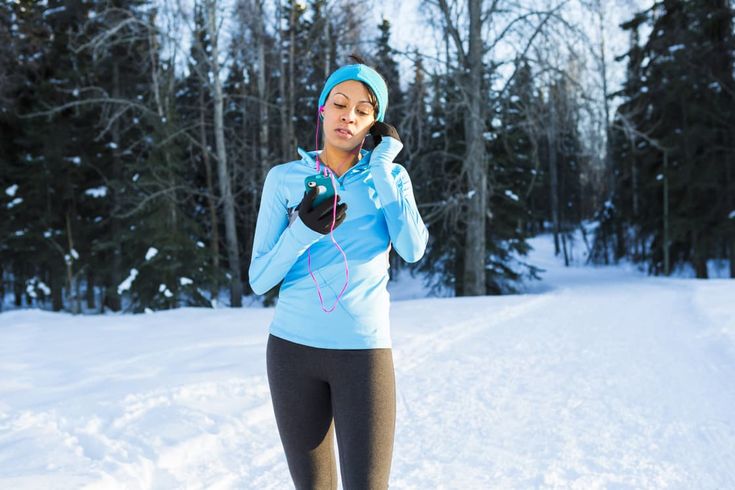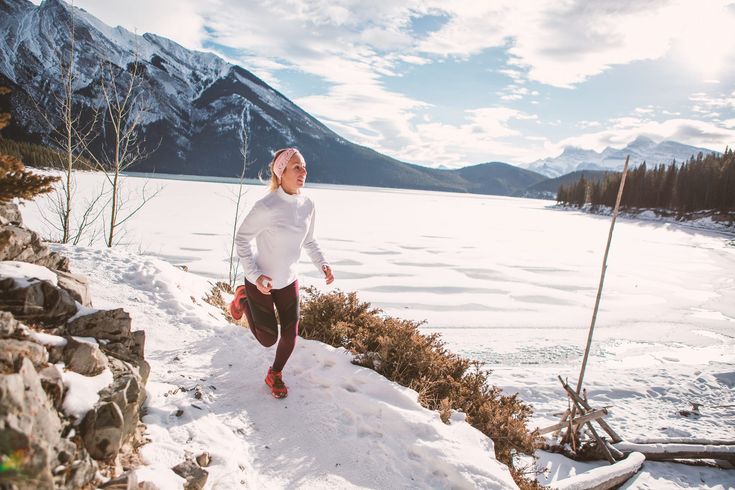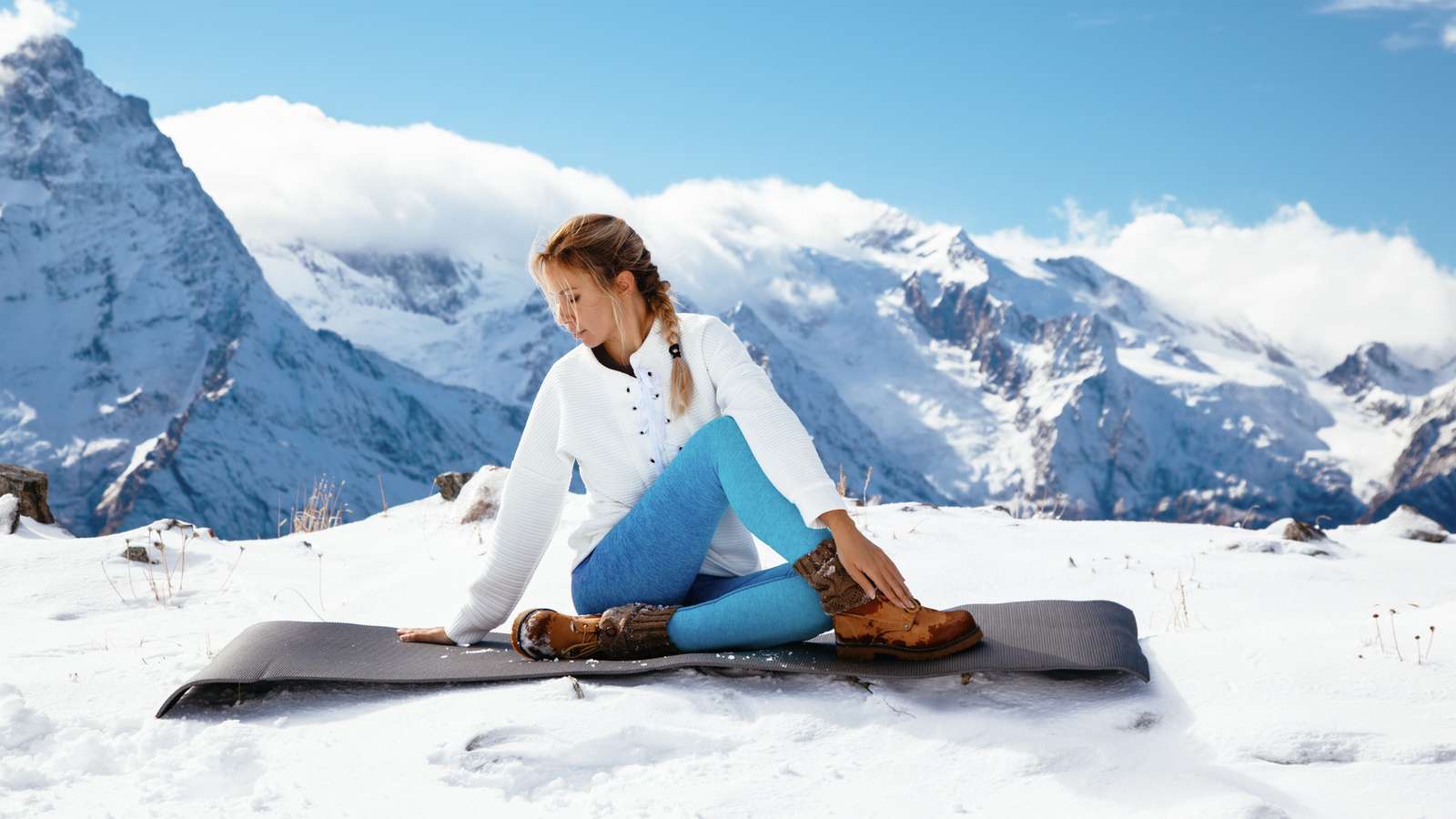Walking in cold weather can be refreshing and invigorating if done correctly. Many people shy away from the chill, thinking it’s safer to stay indoors. With the right clothing and preparation, you can enjoy the beauty of a winter landscape while boosting your immune system and mood through the release of endorphins.
Knowing how to dress properly is key to staying warm and dry during your walks. Layering clothes effectively can protect you from wind and moisture while allowing your body to regulate temperature. In addition to clothing, having the right gear for traction will help keep you safe on slippery surfaces.
Winter walking is not only a way to stay active but can also provide a unique experience that’s different from other seasons. Exploring the outdoors during colder months can bring a sense of peace and clarity.
Key Takeaways
- Dress in layers to maintain warmth and comfort.
- Use appropriate footwear for better traction and safety.
- Enjoy the benefits of walking in cold weather for your mood and health.
Understanding the Basics of Cold Weather Walking
Cold weather walking offers unique benefits for your body and mind. This section covers the importance of staying active during winter and how to adjust to various weather conditions. Being aware of these factors can enhance your walking experience and promote good health.
Importance of Winter Walking
Walking in cold weather is valuable for several reasons. First, it helps burn more calories. When it’s cold, your body works harder to maintain its core temperature, leading to increased calorie expenditure. This added intensity can aid in weight management.
Additionally, winter walking is a form of low-intensity exercise. You can easily incorporate it into your daily routine. Whether you’re walking through the snow or simply around your neighborhood, it can improve cardiovascular health and boost your mood.
Another important factor to consider is the chance to enjoy fresh air. Cold air is often cleaner and can provide a refreshing change from indoor environments filled with allergens. Plus, winter walking can help you prepare for activities like shoveling snow, making it easier to handle this chore when necessary.
Adapting to Weather Conditions
To make the most of your cold weather walks, you must adapt to changing weather conditions. Dressing in layers is key. Start with a moisture-wicking base layer to keep sweat away from your skin. Then, add an insulating layer for warmth and top it off with a waterproof outer layer.
Footwear is also crucial. Choose boots with good insulation and traction for increased stability on icy surfaces. This will help prevent slips and falls.
Always pay attention to your body. If you start to feel too cold, it’s important to take a break and warm up. Be aware of the signs of frostbite and hypothermia. Staying aware will keep your walks safe and enjoyable, even in freezing temperatures.
Appropriate Clothing for Winter Walking
Dressing properly for winter walking is essential for comfort and safety. The right clothing can keep you warm, dry, and free to enjoy your walk. Focus on a layering system that includes a base layer, insulation, and protective outer layers.
Choosing the Right Base Layer
Your base layer is crucial for moisture management. Select a wicking fabric that pulls sweat away from your skin. Materials like polypropylene or synthetic fabrics are ideal choices.
Avoid cotton, as it retains moisture and chills your body when wet.
Consider options like long-sleeve tops or fleece tights. Choose a snug fit without being too tight to allow for freedom of movement.
Many brands offer products specifically designed for cold weather activity that will keep you comfortable.
Insulating Layers for Warmth
The insulating layer traps heat while allowing some moisture to escape. Fleece is a popular choice due to its lightweight and warmth properties.
Choose a medium-weight fleece jacket for flexibility in colder temperatures. Look for materials that offer breathability.
You might also consider synthetic insulation, which retains warmth even when damp. For extra warmth, consider adding a vest as it concentrates heat around your core. Mix and match your layers for different temperature conditions.
Protective Outer Layers
The outer layer is essential for protection against wind, rain, and snow. A breathable jacket is a must. Look for designs with features like adjustable cuffs and hoods for added protection.
Materials like Gore-Tex help keep water out while allowing sweat to escape.
Ensure your jacket is long enough to cover your lower back.
Don’t forget a warm hat to protect your head and ears. A snug-fitting hat made from moisture-wicking material can make a significant difference in warmth.
Layering effectively provides the best defense against cold weather during your walks.


Essential Gear for Traction and Warmth
To enjoy cold weather walking, having the right gear is crucial. This section focuses on footwear adaptations for icy conditions and thermal accessories to keep your extremities warm.
Footwear Adaptations for Ice
Your choice of footwear can greatly impact your safety and comfort while walking on ice. Opt for winter walking shoes or trail running shoes designed for slippery surfaces. Look for features like a rugged, rubber outsole that provides good traction.
Consider adding ice grips or Yaktrax to your shoes. These attachments fit over your footwear and provide extra grip, helping to prevent slips. If you’re facing particularly icy terrain, crampons are another excellent option. They feature spikes that dig into ice, offering superior traction for more challenging walks.
Don’t forget about trekking poles, which can provide stability. Using them helps you maintain balance as you navigate slippery trails. Choose a pair with winter-specific baskets that prevent sinking into snow.
Thermal Accessories for Extremities
Keeping your hands and feet warm is vital during winter walks. Start with hand warmers that you can easily tuck into your gloves or pockets. These can provide extra warmth when the temperature drops.
For your feet, insulated socks are essential. Look for socks made from merino wool or synthetic materials that wick moisture away while retaining warmth. Ensure your footwear has enough room to accommodate thicker socks without being too tight.
Don’t overlook hats and gloves. A warm, well-fitted hat can retain heat, while gloves should allow for dexterity without losing warmth. Consider mittens for extra warmth, as they keep your fingers together. With these accessories, you’ll be better prepared for your cold weather walking adventures.
Walking Techniques and Safety Tips
Walking in cold weather requires special techniques and precautions to ensure your safety and comfort. Proper planning and maintaining stability are key to enjoying your time outdoors during winter.
Maintaining Stability on Wintry Trails
To keep your balance on snowy or icy surfaces, use a cautious approach. Think like a penguin; keep your feet flat and take short, shuffling steps. Bend your knees slightly and lower your center of gravity to help with stability.
Wearing the right footwear is essential. Choose winter boots with a thick, nonslip tread to avoid slipping. Avoid shoes with high heels or smooth soles. If conditions are particularly treacherous, consider using walking poles or a cane for extra support.
Avoid distractions while walking. Keeping your phone away allows you to focus on your footing. If you do fall, try to roll to avoid injury. Make sure to check yourself for any bruises or aches before getting back up.
Planning and Preparing for Walks
Before heading out, check the weather conditions and plan your route. Dress in layers to stay warm and dry, and make sure to cover your hands and head. Consider using thermal gloves and a hat, as these protect against the cold.
Bring safety gear such as a headlamp for visibility if you plan to walk in low light. Having a buddy or letting someone know your route is also wise.
Keep in mind the duration of your walk. If it’s cold, shorter walks can help prevent frostbite. Lastly, stay hydrated, even in winter, as the body still loses moisture while walking.
Alternative Walking Options and Exercises
When cold weather makes walking outdoors difficult, there are effective alternatives to maintain your routine. You can choose indoor walking options or add supplemental exercises to stay active.
Indoor Walking Alternatives
Using a treadmill is one of the best indoor options for walking. It allows you to enjoy the benefits of walking while staying warm and dry. You can set the speed and incline to match your fitness level. Many treadmills come with features like heart rate monitors or programmed workouts to keep things interesting.
Another great option is to walk in a large indoor space, like a shopping mall or gym. This can help you avoid the chilly outdoors while still getting your steps in. Wear breathable clothing made of light synthetic fabric to keep comfortable.
Supplemental Winter Exercises
In addition to indoor walking, consider incorporating other low-impact exercises. These can help you stay active when outdoor walking is not an option. Dynamic stretches are useful to warm up your muscles. Try moves like high knees, butt kicks, or jumping jacks for a few minutes.
You could also explore online workout videos that focus on low-impact cardio. Many can be completed at home with little or no equipment. Adding strength training exercises, such as bodyweight squats and lunges, can boost your overall fitness. These activities will keep your body engaged and help you maintain your health in colder months.




